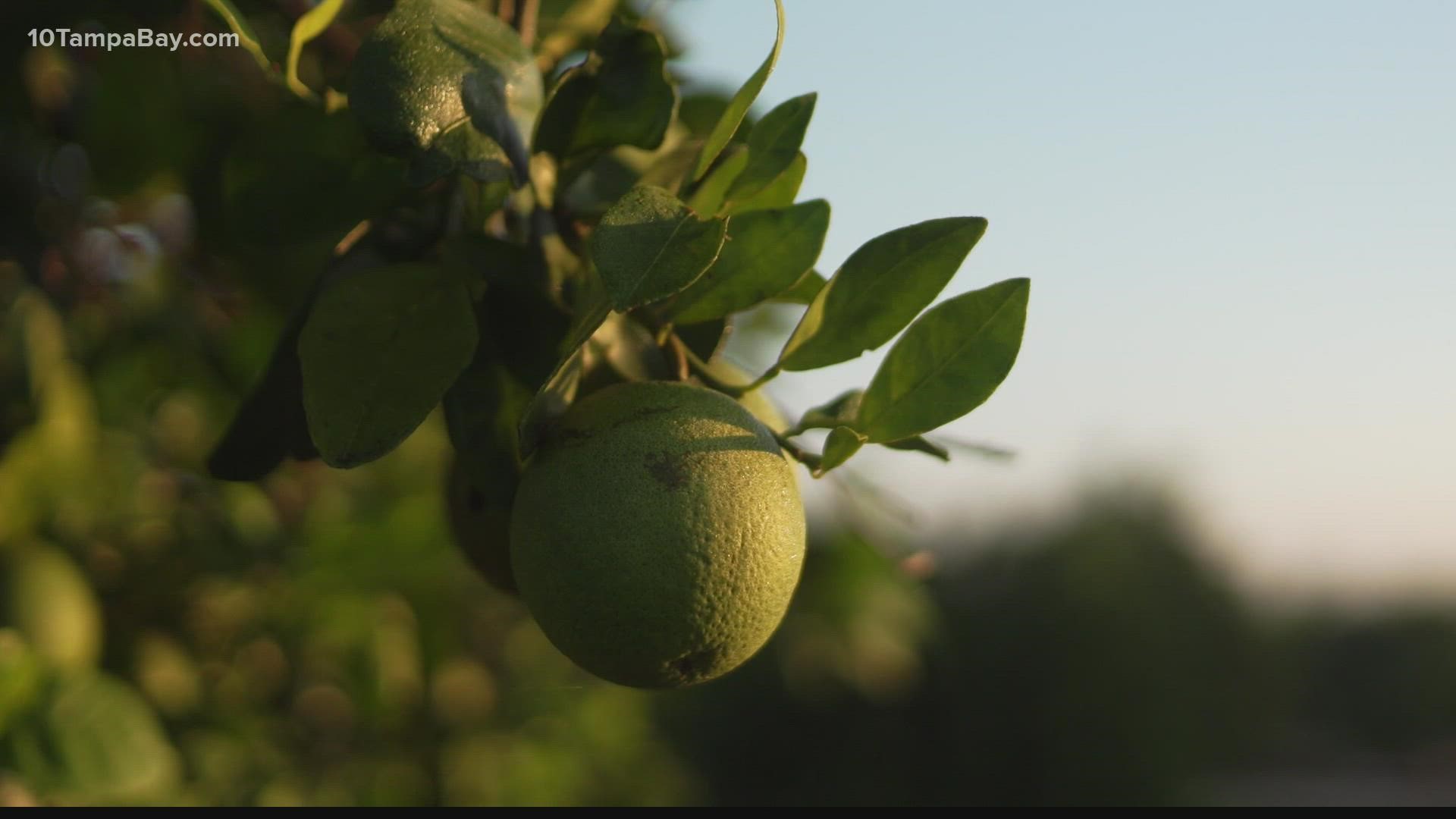TAMPA, Fla. — Did you arrive here from 10 Tampa Bay's Brightside Blend newsletter? Here's the latest on this story: Florida is on pace to produce the smallest crop of oranges in more than 75 years.
---
Oranges have been big business in Florida – part of the state's identity and crucial to its economy.
Over the years, however, citrus production has plummeted. Citrus greening is only part of the problem.
We'll get into citrus greening in a bit; but first, here's a history lesson from a fourth-generation citrus grower.
Christian Spinosa has been in the groves of Polk County since he could walk. Everything he knows about oranges is thanks to his grandfather.
"He's seen the heydays. He's gone through the freezes of the 80s where we've pretty much had to rebuild from scratch," Spinosa explained.
However, history says nothing has hit as hard as citrus greening.
"Greening has had a larger impact than I think any other single factor in the Florida citrus industry," said Tamara Wood, a spokesperson with Florida Citrus Mutual.
Citrus greening is spread by an insect. Once a tree is infected, there is no cure. The disease was first spotted in Florida back in 2005, and the problem persists.
"To me, the easiest way to describe citrus greening is it's suffocating the tree," said Spinosa who doesn't believe the disease will ever fully go away.
Research is ongoing. Growers have tried new techniques over the years like putting fertilizer right on top of the root so the tree can quickly absorb the necessary nutrients; but there's still no silver bullet.
In the last 20 years, Florida Citrus Mutual estimates citrus acreage has dropped from 756,000 acres to 419,000 acres and 60 percent of growers have walked away over the past five years.
Although Spinosa doesn't plan on selling, he knows the struggle.
"You start losing production, what becomes easier? Selling out or staying in the citrus business," he said.
Urbanization and consumer habits are other factors. Back in the day, orange juice used to be a bigger part of our mornings.
Keep in mind, Florida's oranges aren't all that pretty, but that's OK because they aren't for eating. Florida's oranges are for drinking, and 90 percent of the country's orange juice comes from the Sunshine State.
The U.S. Department of Agriculture recently released its forecast for this year's orange harvest. It's forecasting 47 million boxes of Florida oranges, the lowest that number has been since forecasting began.
"I don't know that everyone was expecting quite that low," said Wood.
Peak production came in 1997 with 244 million boxes. Citrus greening hit Florida a few years later; and with no cure in sight and consumption going down, it can be tough for growers to be optimistic about what is next.
"That's a scary world. I don't know if I want to live in a world where there's no orange juice," Spinosa said.
More orange juice consumption helps because it keeps growers in business. The COVID-19 pandemic actually helped the industry when the demand for orange juice went up, but the need is still there for Florida to grow those orange groves back.

